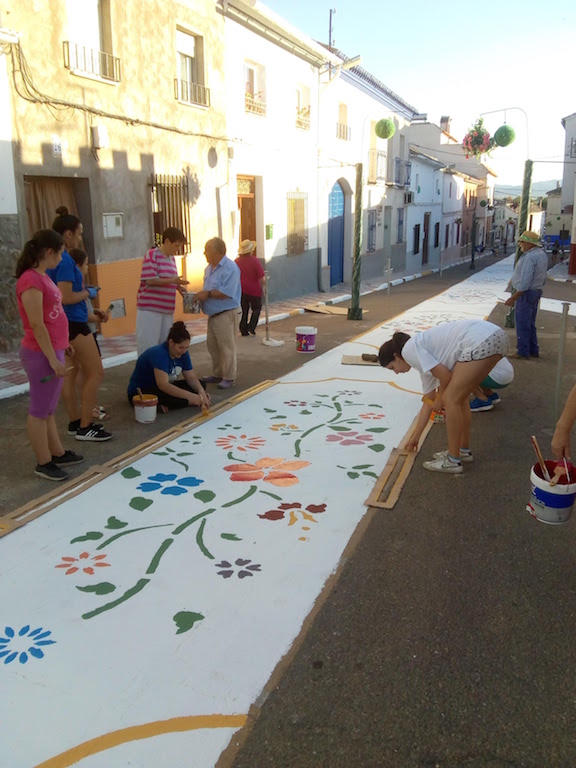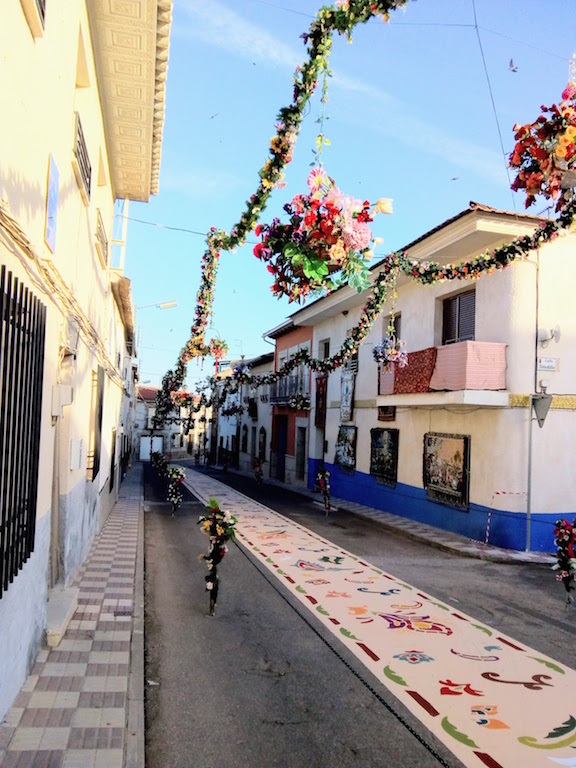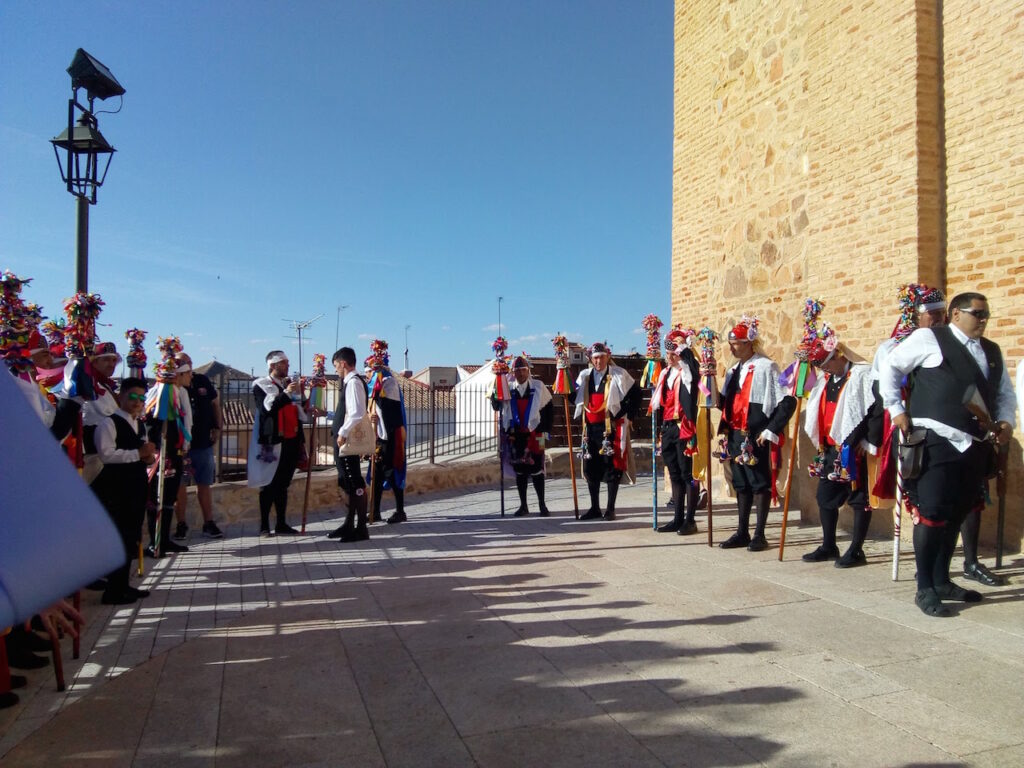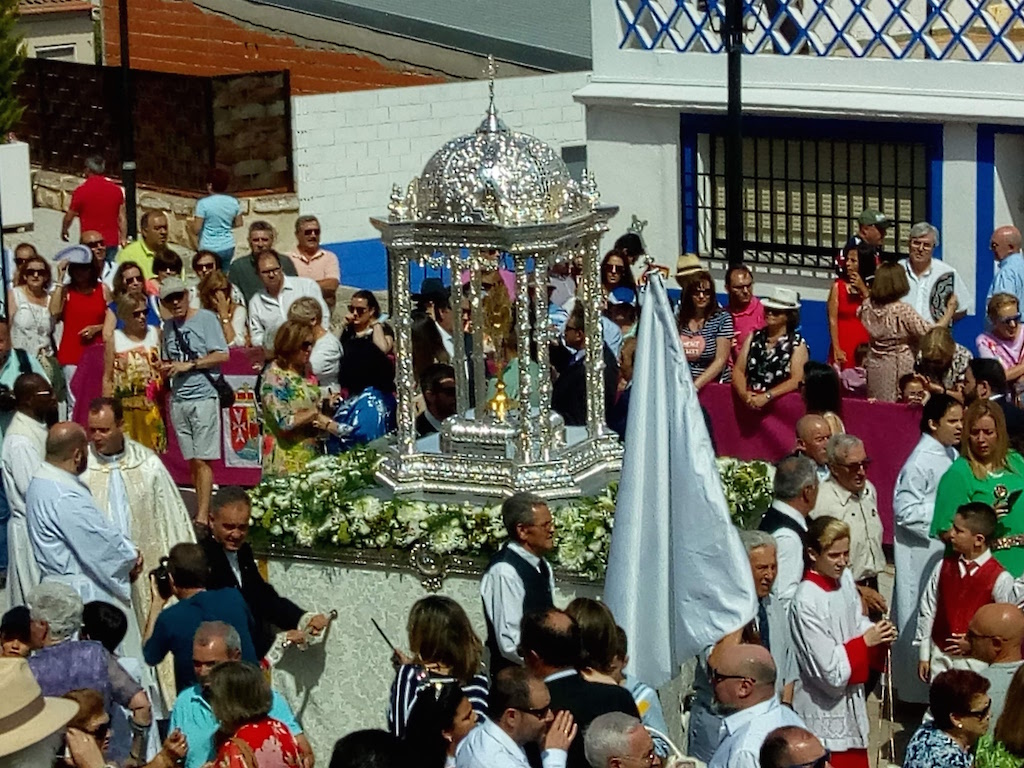In La Mancha, Filipino writer and expat Antonio Montalvan enjoys centuries-old traditions of rural Spain that most tourists don’t experience.
I had taken abode in the tranquil pueblo of Camuñas and little did I know the stunning surprise that awaited me. Each year, Camuñas unfolds its hidden treasure, the Pecados y Danzantes festival (festival of sins and dancers). It takes place around the date of the feast of Corpus Christi between the end of May and early June.
Spanish tradition calls it an auto sacramental, a dramatic street presentation of the mystery of the Eucharist. The name itself is representational mimicry: sins and dancers. There are no dialogues because the characters are dressed in allegorical costumes such as faith, hope, sin and death. It is akin to what is known in the English-speaking world as a morality play, a confrontation between good and evil.
Of customs and changing seasons
Six months in a new place was enough time for me to get settled with the customs and the changing seasons. Familiarity had taken over and friendships had developed with neighbors, my students in school, and their parents. I witnessed first-hand the behind-the-scenes participation of people known to me.
Because of that acquaintance, one does not miss out the passionate fervor of the townsfolk when preparing for the street presentations that take place over a spread of four days. The impact becomes even deeper when one learns that the festival has actually persisted in the town since the 16th and 17th centuries.


The streets are decorated not only with colorful hanging garlands but are also painted with the symbols of the festival. There is a friendly but stiff competition for the street décor and prizes await the most colorful decorations. Camuñas is a town of painters and sculptors. I joined some friends in painting one street using stenciled designs made by local artist Angelines de Mora Cano, mother of my friend Juanma. Over on the other side of town, my other friends showed me what designs they had created. So I actually saw the different street entries before judgment day.
On the first day of the festival, I as a spectator had to be educated on the distinction in costumes. The Pecados wear horrible masks that depict their evil mission. They all carry long sticks and their costumes are colored black and red. The character that represents the Pecado Mayor (major sin) has the mask of a pig’s head, representing the devil. The Danzantes, on the other hand, wear white costumes representing goodness and happiness.
The opening day begins with each group coming from their assigned houses. They converge outside the ayuntamiento (town hall) to collect the mayor and the village priest. Then the march begins to the parish church for the mass of Corpus Christi. When mass begins, the Danzantes are seated inside while the Pecados are left outside the church.


The main spectacle follows right after the mass, and my friend Carlos made sure that I witness it. The Pecados launch an offensive against the Danzantes by releasing a boom of gunpowder. This is to announce the arrival of La Pecadilla who appears to be good but the upper part of her costume reveals her evil mission. Her mission is to tempt the good to sin. Then Pecado Mayor appears with a horrible howl.
Carlos made sure I got a splendid view of the festival. We were perched on the balcony of another friend’s house that overlooked the Plaza Ramon y Cajal outside the stone church. The Danzantes enter to conquer the Pecados with the power of goodness. This is the most interesting part when they perform a transcendental dance, the cordon. Through the dance, they appear to weave a cord by presenting the virtues that humiliate sin: faith, justice, prudence, charity, hope, temperance, and strength. The Danzantes sway to a rhythm of instruments exclusively theirs, but the Pecados move using shouts, screams, booms of gunpowder and the dragging of their sticks.
It is after this when the procession around the decorated streets of the town commences. The crowd is thick and overflowing. Tourists come to see the spectacle and all the casas rurales of town are full.
Who comprise the two opposing groups? They are men of all ages who each join starting as young novices. Each group has a hierarchy and members stay for years until they retire. Many of my students in sexto (6th grade) and quinto (fifth grade) had just begun their long careers as either Pecados or Danzantes. They will stay for years. In many cases, their fathers are also in the groups.

For a town newbie like I was, it was interesting to see familiar faces among both dancers, each carrying their theatrical roles so seriously. They were there to sustain a tradition of their ancestors that had lasted for centuries.
Camuñas has institutionalized the festival by memorializing its long history. In a beautifully curated exhibition set in a modernist edifice is the Centro de Interpretacion de Pecados y Danzantes. It is a permanent museum that houses a collection of old photographs of the festival, period costumes and masks and implements preserved through the ages as family heirlooms. The museum also houses temporary exhibitions of Camuñas artists and artisans.
Savoring the ethnographic pecularities
Spain has regarded the Pecados y Danzantes de Camuñas as a Fiesta de Interés Turistico Nacional (Fiesta of National Touristic Interest) with the same cultural weight as its famous ones like the Las Fallas of Valencia, the Easter in Jerez de la Frontera in Cadiz, or the Folklore Festival of the Pyrenees in Huesca, among a long list.
Living in rural Spain as an expat allows one to savor the ethnographic peculiarities seldom seen in the big cities. Spain is more than the touristic stereotype of the sangria drink that often does not really represent veritable Spanish culture. My one-year residence in Camuñas afforded me that privilege, adding texture to the friendships with the local people that have continued to this day long after I had left the town.
What's Your Reaction?
Antonio J. Montalván II is a social anthropologist and museum professional who writes opinion essays for the Philippine Daily Inquirer, Vera Files, PressOne.PH, and Al Jazeera Digital. He also travels the world occasionally in his study of material cultures.




